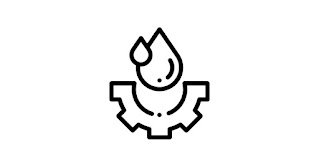(a) 1
(b) 1000
(c) 100
(d) 101.9
(e) 91
Ans: d
2. Property of a fluid by which its own molecules are attracted is called
(a) adhesion
(b) cohesion
(c) viscosity
(d) compressibility
(e) surface tension.
Ans: b
3. Mercury does not wet glass. This is due to property of liquid known as
(a) adhesion
(b) cohesion
(c) surface tension
(d) viscosity
(e) compressibility.
Ans: c
4. The property of a fluid which enables it to resist tensile stress is known as
(a) compressibility
(b) surface tension
(c) cohesion
(d) adhesion
(e) viscosity.
Ans: c
5. Property of a fluid by which molecules of different kinds of fluids are attracted to each other is called
(a) adhesion
(b) cohesion
(c) viscosity
(d) compressibility
(e) surface tension.
Ans: a
6. The specific weight of water is 1000 kg/m”
(a) at normal pressure of 760 mm
(b) at 4°C temperature
(c) at mean sea level
(d) all the above
(e) none of the above.
Ans: d
7. Specific weight of water in S.I. units is equal to
(a) 1000 N/m3
(b) 10000 N/m3
(c) 9.81 x lO3 N/m3
(d) 9.81 x lO6 N/m3
(e) 9.81 N/m3.
Ans: c
8. When the flow parameters at any given instant remain same at every point, then flow is said to be
(a) quasi static
(b) steady state
(c) laminar
(d) uniform
(e) static.
Ans: d
9. Which of the following is dimensionless
(a) specific weight
(b) specific volume
(c) specific speed
(d) specific gravity
(e) specific viscosity.
Ans: d
10. The normal stress in a fluid will be constant in all directions at a point only if
(a) it is incompressible
(b) it has uniform viscosity
(c) it has zero viscosity
(d) it is frictionless
(e) it is at rest.
Ans: e

